Session Seven - Covenants and Types - The New Testament in the Old Testament
Introduction
The Old Testament is full of symbolism and prophecy that point to the coming of Christ and the Christian life. In this session we will briefly look at use of the Old Testament in the New testament and discuss some events, places and things in the OT that "prefigure" the new.
The Old Testament is Quoted Extensively in the New Testament
Much of the Old Testament is quoted in the New Testament, where it is seen as predicting the life and ministry of Jesus. One example (among many):
The next day, the news that Jesus was on the way to Jerusalem swept through the city. A large crowd of Passover visitors took palm branches and went down the road to meet him. They shouted, "Praise God! Blessings on the one who comes in the name of the Lord! Hail to the King of Israel!" Jesus found a young donkey and rode on it, fulfilling the prophecy that said: "Don't be afraid, people of Jerusalem. Look, your King is coming, riding on a donkey's colt." His disciples didn't understand at the time that this was a fulfillment of prophecy. But after Jesus entered into his glory, they remembered what had happened and realized that these things had been written about him. (John 12:12-16)
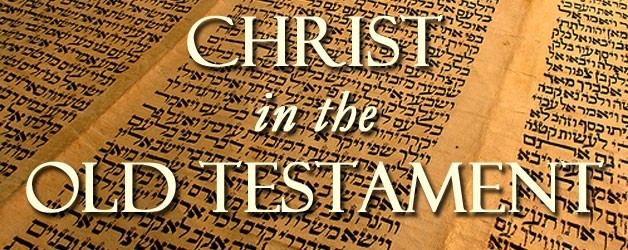
Jesus emphasised these links. "You search the Scriptures because you think they give you eternal life. But the Scriptures point to me!" (John 5:39). Walking with two of the disciples on the road to Emmaus on the evening of his resurrection, He "took them through the writings of Moses and all the prophets, explaining from all the Scriptures the things concerning himself. (Luke 24:27).
Some other examples:
- Matthew applies Hosea 11:1 to Jesus' return from Egypt (Mt 2:15), highlighting the parallel between Israel, who failed their testings in the wilderness, and Jesus, who came through them victoriously to form the heart of a renewed people of God.
- John 6 presents the feeding of the five thousand as a repetition of the manna miracle, signalling a greater exodus from sin and death.
- Paul applies the exodus themes of "slavery" and "redemption" to the work of the cross (eg Ephesians 1:14), and finds in the wilderness wanderings several types of Christ and the church (1 Cor 10:1-13.
- Hebrews develops the theme of the "rest" enjoyed by Israel in the Promised Land and applies it to our sharing of the life of God himself (Heb 3:1-4:13).
- 1 Peter 2:9-10 uses Exodus 19:5-6, to make Israel a type of the church.
An index in the Jewish New Testament catalogues 695 separate quotations from the Old Testament in the New (Jewish New Testament Publications, Jerusalem, 1989). There are many other passages where the Old Testament is referred to, or where an OT figure is mentioned, but no specific scripture is quoted. Some scholars think the number of OT quotations and references in the New Testament may be as high as 4,105 (Roger Nicole, The Expositor's Bible Commentary , Zondervan, Grand Rapids, 1979, Vol. I, p. 617).
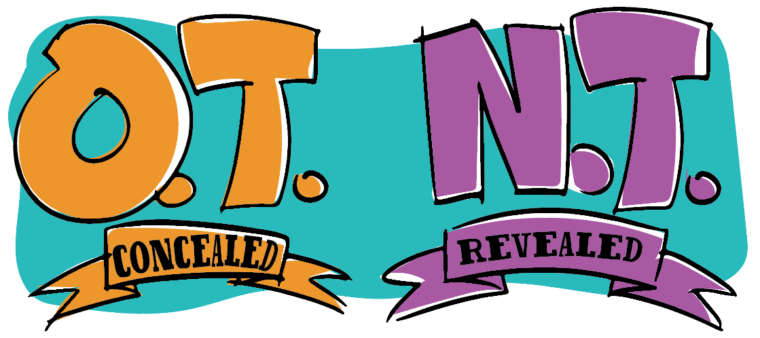
What is Biblical Typology?
Biblical typology interprets events in Old Testament history as "types" or "figures", which find their fulfillment in New Testament events. According to this view, Old Testament history has both a literal and a spiritual sense. Jesus Himself used the Old Testament in both ways. For example, when the Pharisees and Sadducees asked Jesus for a sign, He responded that they would be given only "the sign of Jonah" (Mt. 16.4 and Lk. 11. 29). Jonah spent three days in the fish's belly as a foreshadowing of Jesus who would spend three days in the tomb before His resurrection.
Typology is a kind of symbolism that helps us understand the importance of the Old Testament. We can define a type as a "prophetic symbol" because all types are represent something in the future. More specifically, a type in scripture is a person, thing, or event in the Old Testament which foreshadows a person, thing, or event in the New Testament.
When we say that someone is a type of Christ, we mean that a person in the Old Testament behaves in a way that corresponds to Jesus' character or life.
Scripture itself identifies several Old Testament events as types of Christ's redemption, including the tabernacle, the sacrificial system, and the Passover. The Old Testament tabernacle is identified as a type in Hebrews 9:8-9. The high priest's entrance into the holiest place once a year prefigured the mediation of Christ, our High Priest (Heb 9:6-12. Later, the veil of the tabernacle is said to be a type of Christ (Hebrews 10:19-20) in that His flesh was torn, (as the veil was when He was crucified) in order to provide entrance into God's presence for those who are covered by His sacrifice. Items in the tabernacle have significance as types.
The following summary of types implied by items in the Tabernacle is useful.
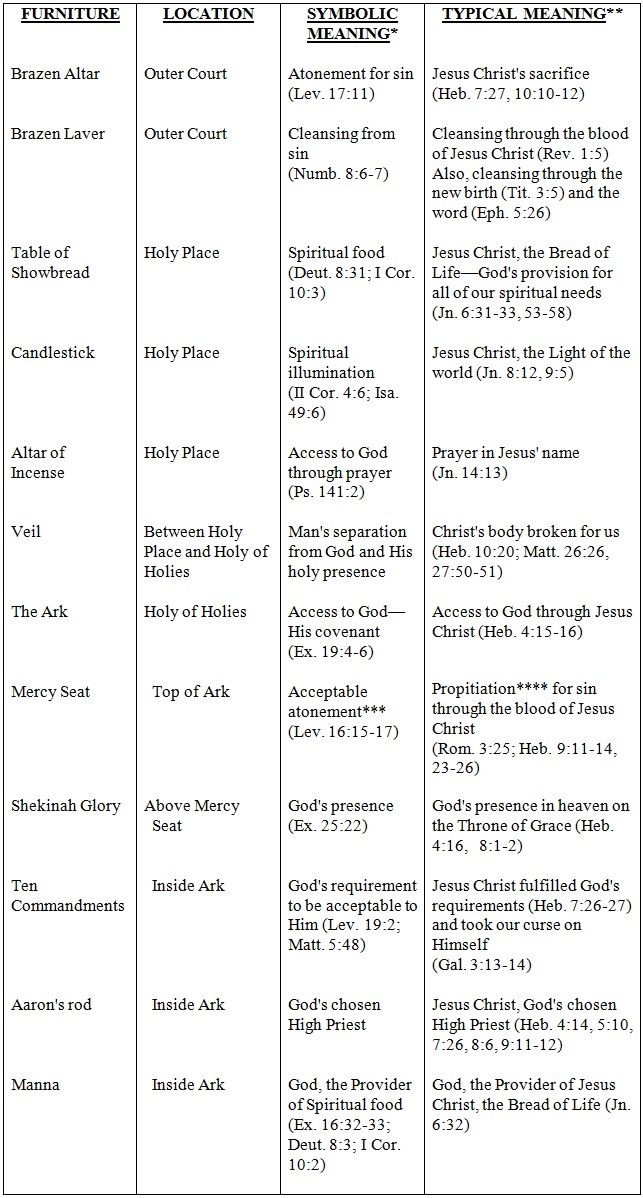
The whole sacrificial system is seen as a type of the work of Christ in Heb 9:19-28. This passage teaches that the Old Testament sacrifices typify Christ's final sacrifice for the sins of the world. The Passover is also a type of Christ, according to 1 Corinthians 5:7, "Christ our Passover is sacrificed for us."
There is a difference between an illustration and a type. A type is always identified as such in the New Testament. A Bible student finding correlations between an Old Testament story and the life of Christ is simply finding illustrations. For example, many people see parallels between Joseph (Genesis 37-45) and Jesus. The humiliation and subsequent glorification of Joseph seem to correspond to the death and resurrection of Christ. However, the New Testament never uses Joseph as a model of Christ; therefore, Joseph's story is properly called an illustration, but not a type, of Christ.
People as Types
A number of Old Testament people, due to some character or relation which they sustain in redemptive history, serve as types.
- Adam is a type of Christ in that as the former introduced sin into the world, even so, through the latter a system of righteousness was made available for mankind (Romans 5:19).
- Melchizedek, who was both king of Salem and a priest of God—at the same time (Genesis 14:18-20)—was a type of Christ. Jesus, at his ascension, began to reign on David's throne and to simultaneously function as our high priest (cf. Psalm 110:4; Zechariah 6:12, 13; Hebrews 5:6-10; 6:20; 7:1-17).
- Moses, in his noble role of prophet, leader, and mediator for Jehovah's people, was typical of Jesus, who functions in a similar capacity (cf. Deuteronomy 18:15; Acts 3:22; Galatians 3:19; 1 Timothy 2:5).
 Melchizedek is a type of Christ (Hebrews 5:6-10)
Melchizedek is a type of Christ (Hebrews 5:6-10)
Places as Types
Several prominent places emphasized in the Old Testament appear to have a typical significance.
Egypt represents a state of slavery in which we live before conversion (1 Corinthians 10:1; Romans 6:17). The wilderness represents our Christian life and journey. Jerusalem, or Zion, typifies the church and finally heaven (cf. Galatians 4:25, 26; Hebrews 12:22; Revelation 21:2).
Babylon, which held God's people captive in the Old Testament, pictures the condition of a backslidden church that has departed from the simplicity of the New Testament pattern (Revelation 14:8; 16:19; 17:5; 18:2).
Things as Types
Certain Old Testament objects foreshadow New Testament truths. For example, Jacob's ladder, with angels ascending and descending upon it (Genesis 28:12), pictured Christ (John 1:51), who provides both communication from the Father (John 1:18; Hebrews 1:1-2) and access to heaven (John 14:6).
The bronze snake lifted up in the wilderness, through which the people found physical healing (Numbers 21:8, 9) was a type of the lifted-up Christ (John 3:14; 12:32), through whom spiritual healing and life come (Isaiah 53:5).
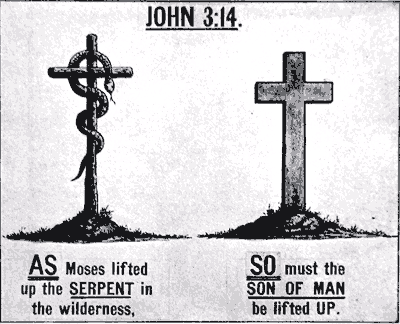
As indicated earlier, the tabernacle and many of its features were typical of the present time (Hebrews 9:8-9). The most holy place (or Holy of Holies) in the tabernacle, where the Ark of God was placed and He lived among the Israelites for a period, represented heaven (Hebrews 6:19, 20; 9:8, 24), while the holy place was a type of the church (Acts 15:16-18; 1 Corinthians 3:16; 1 Timothy 3:15).
Events as Types
Several Old Testament events seem to represent things to come. The creation of light on the first day of Earth's history (Genesis 1:3) suggests the coming brilliant illumination of the gospel of Christ (cf. 2 Corinthians 4:6).
The deliverance of Noah's family from judgement on a corrupt world (Genesis 6-8), by means of "water," prefigured our salvation and baptism, from the power of darkness into the kingdom of Christ (cf. 1 Peter 3:20-21; Colossians 1:13). The flood also typified the destruction of the world that is yet to come (Matthew 24:37-39).
Paul teaches us that the miraculous life-giving water from the rock in the wilderness (Exodus 17:6) was a type of the "water" provided by Christ (John 4:14; 1 Corinthians 10:4).
The manna from heaven given as food to the Israelites during their long years in the wilderness (Exodus 16:14-16; Psalm 78:24, 25) was a type of that spiritual bread who came down from heaven to feed humanity (John 6:32).
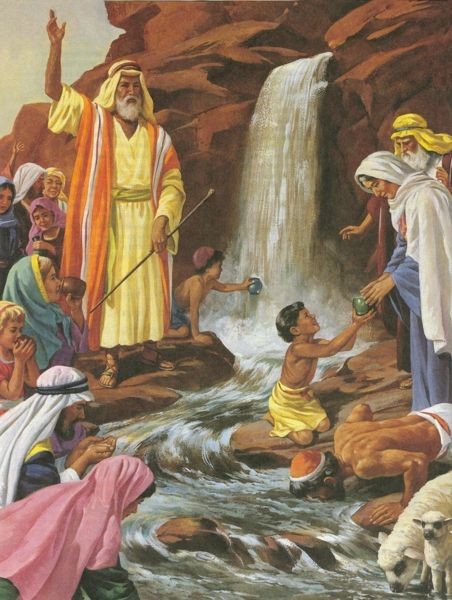
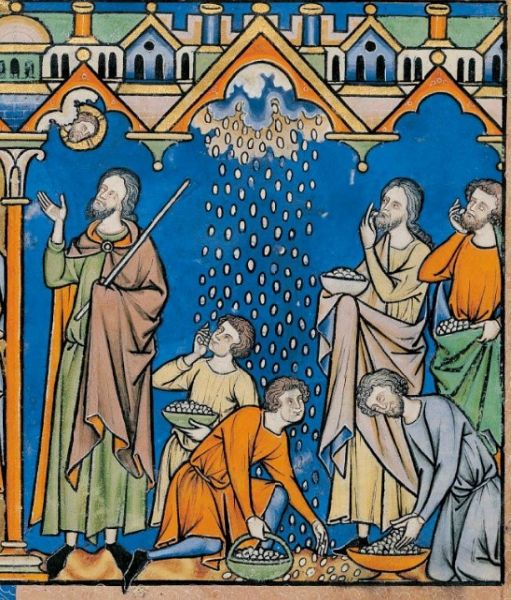
Water and manna in the wilderness; mediaeval impressions
Roles as Types
There were three offices in the Old Testament characterized by an anointing. Prophets (1 Kings 19:16), priests (Exodus 28:41), and kings (1 Samuel 10:1) were anointed with oil in anticipation of the coming of the anointed one, lit. Messiah, or Christ, (cf. Daniel 9:25, 26) who is prophet (Acts 3:22), priest (Hebrews 3:1), and king (Revelation 17:14).
We too, as Christians, have an anointing from God (2 Corinthians 1:21) and we function as "prophets" in NT meaning of the word (not miraculously, but simply as "forth speakers" of the word of God—cf. 1 Corinthians 11:4, 5), priests, and kings (cf. 1 Peter 2:9; Revelation 1:6).
The anointing of individuals in the Old Testament prefigured both the work of Christ and our service to him.
Rituals as Types
Rituals in the Old Testament typified the work of the Messiah. For example, on the annual Day of Atonement, the high priest presented two goats before the door of the tabernacle. One was sacrificed as a "sin-offering" (Leviticus 16:9, 10). Its blood was taken the most holy place where it was sprinkled upon the mercy seat. This was a type of the sacrificial death of Christ (Hebrews 9:11, 12). The high priest then took the living goat, laid hands upon it and confessed over it all the sins of the people. The animal was then led away into the wilderness and released (Leviticus 16:21, 22). The two goats were two sides of the same coin. One signified his death and the atoning effect of his blood, the other his resurrection (cf. Romans 4:25) and the complete removal of our sins (cf. Isaiah 53:4, 6; John 1:29).
Institutions as Types
Many institutions of the Old Testament were shadows of things to come. The Passover, with its spotless lamb (Exodus 12:5) sacrificed "between the two evenings" (12:6), ie between 3-5pm, without any bones being broken (12:46), was a type of the death of Jesus (cf. 1 Corinthians 5:7), without spot or blemish (1 Peter 1:19), who died at about 3pm (Matthew 27:46), and who had no bones broken (John 19:33).
The Feast of the First Fruits (Leviticus 23:10), or Pentecost, was a celebration in which the initial produce of the harvest was offered to God as a token of the full crop to follow. This ritual typified: (1) the early influx of the Jews into the church of Christ (Romans 11:16); and, (2) the resurrection of the Lord Jesus as God's promise of the resurrection to come (1 Corinthians 15:20, 23).
The Feast of Tabernacles (or tents) commemorated Israel's wilderness wanderings (Leviticus 23:43). It reminds us that we are travelling through (1 Peter 2:11) and will one day put aside our earthly tabernacle (2 Corinthians 5:1; 2 Peter 1:13, 14) for a permanent one (cf. Hebrews 11:9-13). Jesus used meanings in the Feast of Tabernacles to offer people living water and promise the Holy Spirit (John 7:37-39).
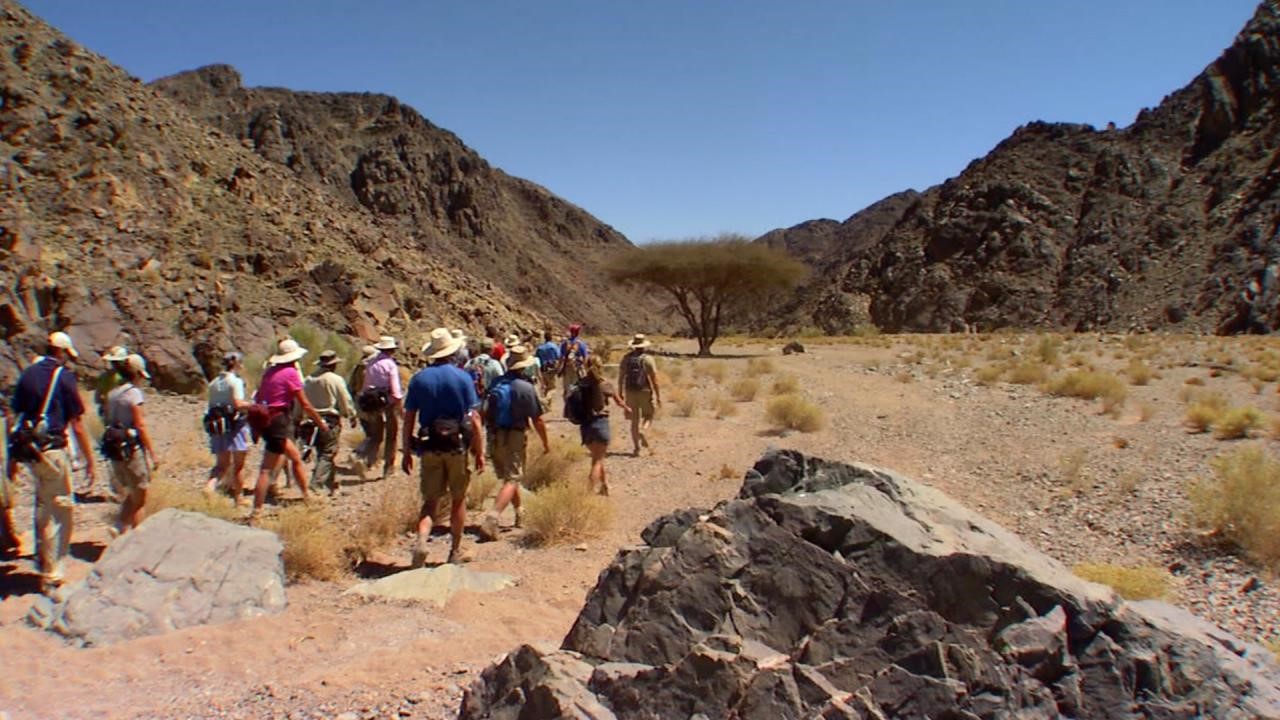
We can learn important lessons from such visual aids.
Who is the Fourth Man? (from a sermon by Oral Roberts)
In Genesis He is the Seed of the Woman.
In Exodus He is the Passover Lamb.
In Leviticus He is our High Priest.
In Numbers He is the Pillar of Cloud by day and the Pillar of Fire by night.
In Deuteronomy He is the Prophet like Moses.
In Joshua He is the Captain of our Salvation.
In Judges He is our Judge and Lawgiver.
In Ruth He is our Kinsman Redeemer.
In I and II Samuel He is our Trusted Prophet.
In Kings and Chronicles He is our Reigning King.
In Ezra He is our Faithful Scribe.
In Nehemiah He is the Rebuilder of the Broken Down Walls of our human lives.
In Esther He is our Mordecai.
In Job He is our Living Redeemer.
In Psalms He is the Lord our Shepherd.
In Proverbs and Ecclesiastes He is our Wisdom.
In the Song of Solomon He is our Lover and the Bridegroom.
In Isaiah He is the Prince of Peace.
In Jeremiah He is the Righteous Branch.
In Lamentations He is the Weeping Prophet.
In Ezekiel He is the Wonderful Four-Faced Man.
In Daniel He is the Fourth Man in the burning fiery furnace.
In Hosea He is the Faithful Husband, forever married to the backslider.
In Joel He is the Baptizer with the Holy Spirit and Fire.
In Amos He is our Burden-Bearer.
In Obadiah He is the Mighty to Save.
In Jonah He is our Great Foreign Missionary.
In Micah He is the Messenger of Beautiful Feet, of carrying the Gospel.
In Nahum He is the Avenger of God's Elect.
In Habakkuk He is God's Evangelist, crying, "Revive your work in the midst of the years."
In Zephaniah He is our Saviour.
In Haggai He is the Restorer of God's Lost Heritage.
In Zechariah He is the Fountain Opened in the House of David for sin.
And in Malachi He is the Sun of Righteousness, rising with healing in His wings.
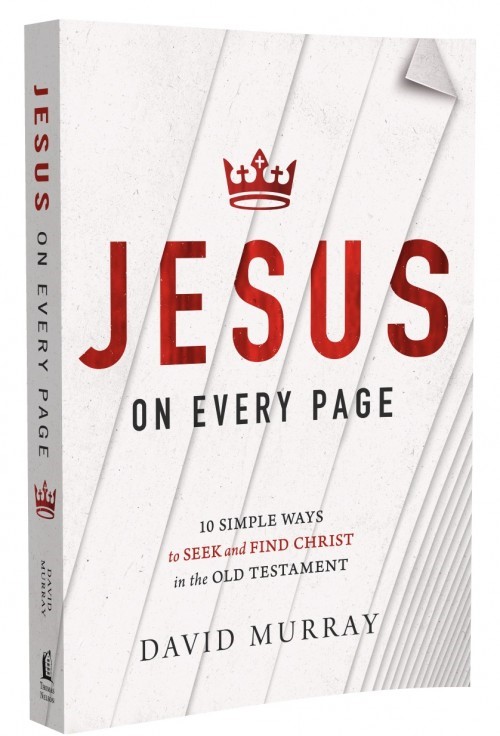
Be Careful of Excesses
Typology can be taken out of context and misapplied. We need to keep close to the Biblical intention and plain meaning. Teachings about colours, numbers (based on numerical values of Hebrew letters), items and symbols in the Bible can be useful, but can also be used to justify ideas ranging from speculative and silly through to dangerous, and taken to excess by cults. Types are tools; they should never become ends in themselves. They should never be used in isolation to justify otherwise unsupported interpretations of the Bible. We should never try to read into the Bible what is not there.
Typology in Modern Christian Worship
In recent times, the church has re-emphasised typology from the Old Testament. We use references to "the lion and the lamb", and "the blood of the lamb" in some of the songs we sing. The old song "Guide me, O thou Great Jehovah" was written by William Williams in 1745. It has been used for worship in congregations around the world and is still sung in many churches. Williams uses imagery from Exodus to describe God's guidance through our struggles in life and our hope of eternal life.
Guide me, O thou great Jehovah,
pilgrim through this barren land;
I am weak, but you are mighty;
hold me with your powerful hand.
Bread of heaven, bread of heaven,
feed me now and evermore,
feed me now and evermore.
Open now the crystal fountain,
where the healing waters flow.
Let the fire and cloudy pillar
lead me all my journey through.
Strong Deliverer, strong Deliverer,
ever be my strength and shield,
ever be my strength and shield.
When I tread the verge of Jordan,
bid my anxious fears subside
Death of death, and hell's Destruction,
land me safe on Canaan's side.
Songs of praises, songs of praises
I will ever sing to you,
I will ever sing to you.
We also use (over-use?) concepts from the OT to describe aspects of church and personal life as Christians. Examples include: equating prayer to clouds from burning incense rising from the "altar" of our hearts; "living sacrifices" (cf Romans 12:1); the "fire of God" in our lives; "wilderness experiences"; the "anointing" of the Holy Spirit on ministry, worship, preaching, and so on. Communion reminds us of the Jewish Passover Feast (on which the first such meal was based). Society has adopted terms such as "sacrificial lamb" and "scapegoat", which have OT origins.
For Reflection
- Many things that happened to people in the Old Testament were "types" recorded for our benefit. When you read the Old Testament look for personal applications.
- Be careful to check out any interpretation you may consider novel. It may be new for you, but old for others. On the other hand, it may come from a misunderstanding. Is it confirmed in other parts of the Bible?
- Do you indiscriminately use OT terms when relating to people who haven't got a clue what they mean? Are there better ways of expressing these truths?



 Melchizedek is a type of Christ (Hebrews 5:6-10)
Melchizedek is a type of Christ (Hebrews 5:6-10)




